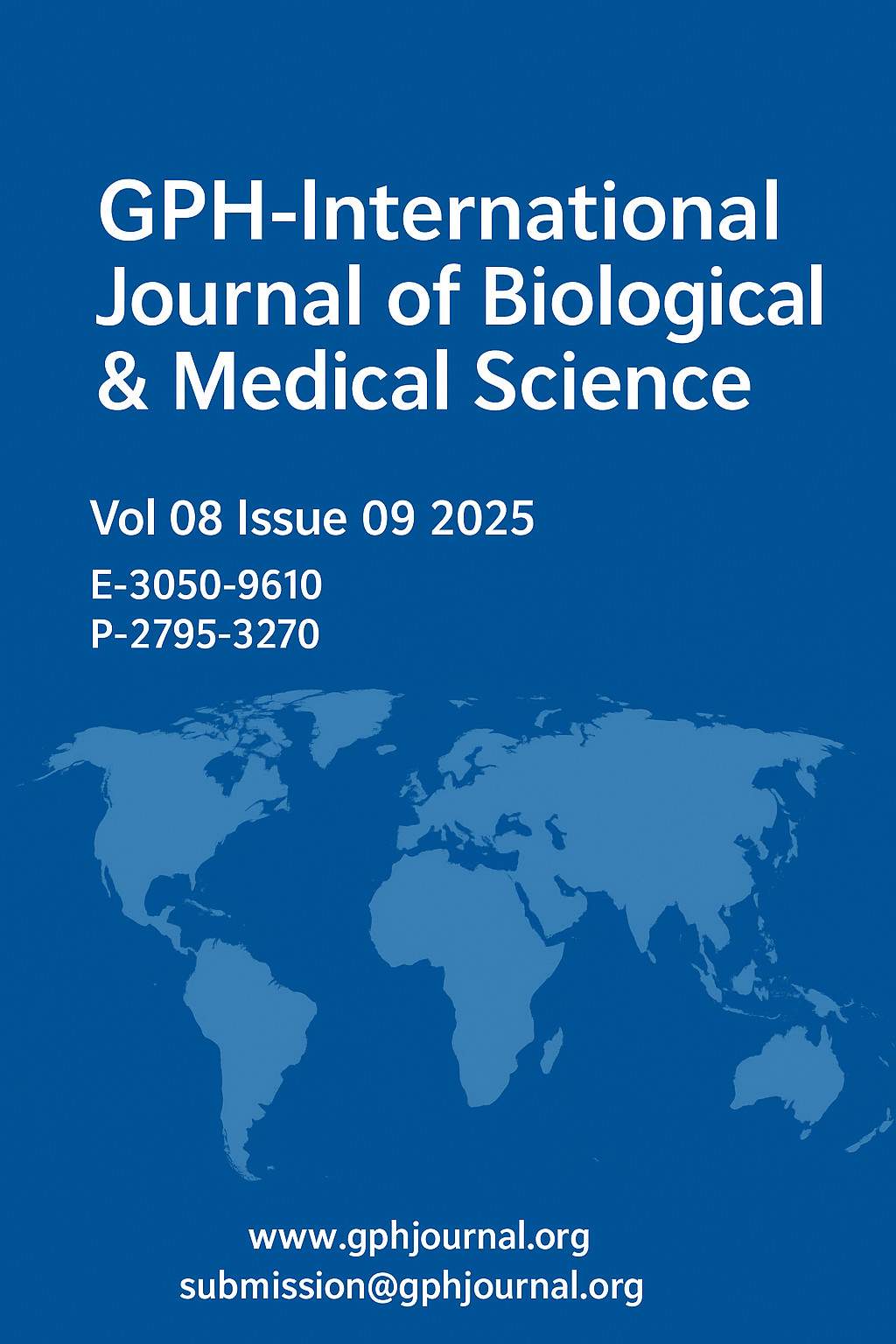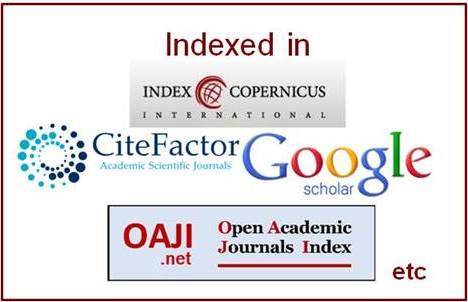Age-Related Histomorphological Changes in Human Kidneys: A Cadaveric Study
Abstract
Background: As people become older, their kidneys change in both structure and function, which makes them less able to do their job and raises the risk of chronic kidney disease (CKD), especially in older people. Even though a lot of research has been done on Western cultures, there isn't much information about how kidneys age in South Asian populations, like Bangladesh. Objective: The goal of this study was to look at how the structure of human kidneys varies with age in different age groups using cadaver samples from Bangladesh. Methodology: At Dhaka Medical College, researchers did a descriptive cross-sectional study on 100 kidneys from unclaimed bodies. The bodies were divided into four age groups: 10–19, 20–39, 40–59, and 60 years or older. We assessed morphometric characteristics such kidney weight, length, width, thickness, and volume. We also used hematoxylin and eosin staining to look at the number and size of glomeruli. ANOVA and unpaired t-tests were used to do the statistical analysis. Results: The size and volume of the kidneys were highest in the 20–39 years group and dropped a lot in older age groups (≥60 years). As people got older, the number of glomeruli per mm² went down, but the diameter of the glomeruli went up. This is a sign of compensatory hypertrophy. Histological results also showed that older kidneys had more interstitial fibrosis and thicker blood vessels. These findings support global patterns of kidney aging and draw attention to unique structural changes in South Asia. Conclusion: The work gives important baseline histomorphological information about how kidneys age in a South Asian population, showing that the structure of kidneys starts to break down after age 60. To find and treat age-related kidney disorders early, it's important to understand these changes, especially in places like Bangladesh where resources are limited.
Downloads
References
Kotob MH, Hussein A, Abd-Elkareem M. Histopathological changes of kidney tissue during aging. SVU-International Journal of Veterinary Sciences. 2021 Mar 1;4(1):54-65.
Hommos MS, Glassock RJ, Rule AD. Structural and functional changes in human kidneys with healthy aging. Journal of the American Society of Nephrology. 2017 Oct 1;28(10):2838-44.
Denic A, Lieske JC, Chakkera HA, Poggio ED, Alexander MP, Singh P, Kremers WK, Lerman LO, Rule AD. The substantial loss of nephrons in healthy human kidneys with aging. Journal of the American Society of Nephrology. 2017 Jan 1;28(1):313-20.
Aslan A, van den Heuvel MC, Stegeman CA, Popa ER, Leliveld AM, Molema G, Zijlstra JG, Moser J, van Meurs M. Kidney histopathology in lethal human sepsis. Critical Care. 2018 Dec 27;22(1):359.
Ryan D, Sutherland MR, Flores TJ, Kent AL, Dahlstrom JE, Puelles VG, Bertram JF, McMahon AP, Little MH, Moore L, Black MJ. Development of the human fetal kidney from mid to late gestation in male and female infants. EBioMedicine. 2018 Jan 1;27:275-83.
Komutrattananont P, Mahakkanukrauh P, Das S. Morphology of the human aorta and age-related changes: anatomical facts. Anatomy & cell biology. 2019 Jun 1;52(2):109-14.
Jingushi K, Uemura M, Ohnishi N, Nakata W, Fujita K, Naito T, Fujii R, Saichi N, Nonomura N, Tsujikawa K, Ueda K. Extracellular vesicles isolated from human renal cell carcinoma tissues disrupt vascular endothelial cell morphology via azurocidin. International journal of cancer. 2018 Feb 1;142(3):607-17.
Zhao S, Todorov MI, Cai R, Ai-Maskari R, Steinke H, Kemter E, Mai H, Rong Z, Warmer M, Stanic K, Schoppe O. Cellular and molecular probing of intact human organs. Cell. 2020 Feb 20;180(4):796-812.
Davies DS, Ma J, Jegathees T, Goldsbury C. Microglia show altered morphology and reduced arborization in human brain during aging and A lzheimer's disease. Brain Pathology. 2017 Nov;27(6):795-808.
Lowe JS, Anderson PG, Anderson SI. Stevens & Lowe's Human Histology-E-Book: Stevens & Lowe's Human Histology-E-Book. Elsevier Health Sciences; 2023 Dec 13.
Rossiello F, Jurk D, Passos JF, d’Adda di Fagagna F. Telomere dysfunction in ageing and age-related diseases. Nature cell biology. 2022 Feb;24(2):135-47.
Alfaras I, Mitchell SJ, Mora H, Lugo DR, Warren A, Navas-Enamorado I, Hoffmann V, Hine C, Mitchell JR, Le Couteur DG, Cogger VC. Health benefits of late-onset metformin treatment every other week in mice. NPJ aging and mechanisms of disease. 2017 Nov 20;3(1):16.
Siva S, Ali M, Correa RJ, Muacevic A, Ponsky L, Ellis RJ, Lo SS, Onishi H, Swaminath A, McLaughlin M, Morgan SC. 5-year outcomes after stereotactic ablative body radiotherapy for primary renal cell carcinoma: an individual patient data meta-analysis from IROCK (the International Radiosurgery Consortium of the Kidney). The Lancet Oncology. 2022 Dec 1;23(12):1508-16.
Bettiga A, Fiorio F, Di Marco F, Trevisani F, Romani A, Porrini E, Salonia A, Montorsi F, Vago R. The modern western diet rich in advanced glycation end-products (AGEs): An overview of its impact on obesity and early progression of renal pathology. Nutrients. 2019 Jul 30;11(8):1748.
Walsh CL, Tafforeau P, Wagner WL, Jafree DJ, Bellier A, Werlein C, Kühnel MP, Boller E, Walker-Samuel S, Robertus JL, Long DA. Imaging intact human organs with local resolution of cellular structures using hierarchical phase-contrast tomography. Nature methods. 2021 Dec;18(12):1532-41.
Miao J, Liu J, Niu J, Zhang Y, Shen W, Luo C, Liu Y, Li C, Li H, Yang P, Liu Y. Wnt/β‐catenin/RAS signaling mediates age‐related renal fibrosis and is associated with mitochondrial dysfunction. Aging cell. 2019 Oct;18(5):e13004.
Stenvinkel P, Painer J, Kuro-o M, Lanaspa M, Arnold W, Ruf T, Shiels PG, Johnson RJ. Novel treatment strategies for chronic kidney disease: insights from the animal kingdom. Nature Reviews Nephrology. 2018 Apr;14(4):265-84.
Cohen EP, Hankey KG, Bennett AW, Farese AM, Parker GA, MacVittie TJ. Acute and chronic kidney injury in a non-human primate model of partial-body irradiation with bone marrow sparing. Radiation research. 2017 Dec 1;188(6):741-51.
Jespersen NZ, Feizi A, Andersen ES, Heywood S, Hattel HB, Daugaard S, Peijs L, Bagi P, Feldt-Rasmussen B, Schultz HS, Hansen NS. Heterogeneity in the perirenal region of humans suggests presence of dormant brown adipose tissue that contains brown fat precursor cells. Molecular Metabolism. 2019 Jun 1;24:30-43
Author(s) and co-author(s) jointly and severally represent and warrant that the Article is original with the author(s) and does not infringe any copyright or violate any other right of any third parties, and that the Article has not been published elsewhere. Author(s) agree to the terms that the GPH Journal will have the full right to remove the published article on any misconduct found in the published article.























